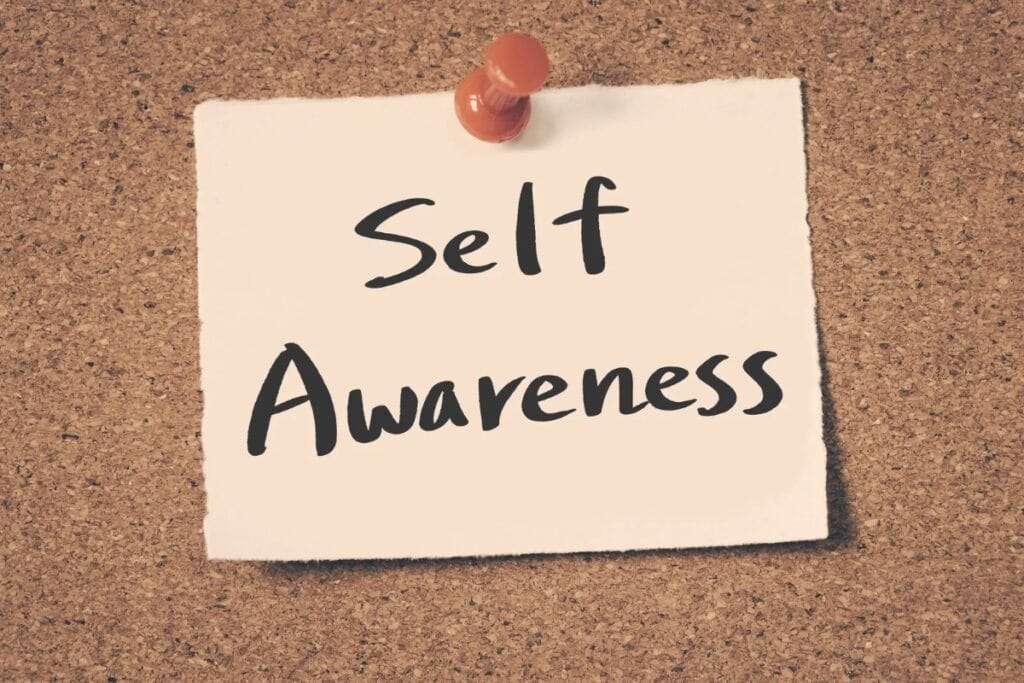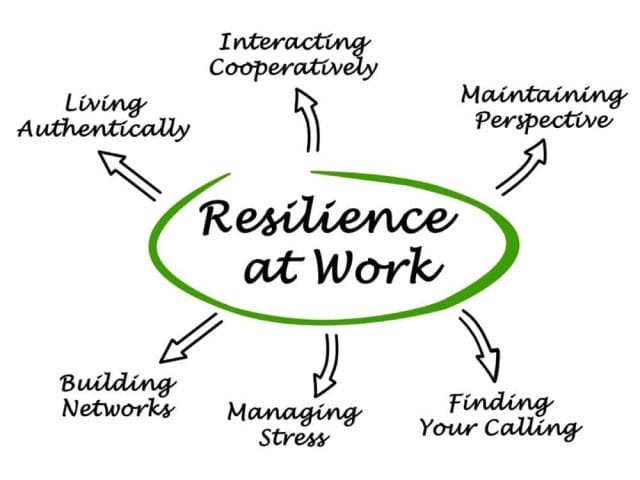Have you ever noticed how negative thoughts can spiral, dragging down your entire day? Conversely, a positive outlook can be incredibly uplifting. But how do you train your mind to focus on the good? This guide introduces 7 powerful positive thinking techniques for beginners, helping you rewire your brain for happiness and success. Ready to face challenges with a brighter, more optimistic outlook?
Introduction To Positive Thinking
I’m often reminded of the profound effect our mindset has on our daily experiences. Our thoughts can shape our reality, influencing everything from our interactions with others to our personal accomplishments. This is where positive thinking enters the scene.
You might have heard about positive thinking before – the idea that by consciously directing your thoughts in a more optimistic direction, you can impact your life for the better. It’s more than just a feel-good mantra; it’s a powerful tool backed by psychology. If you’re just beginning this journey, there’s great news: anyone can learn the techniques to cultivate a more positive mindset.
In the spirit of practicality, I have distilled seven tips that are particularly effective for beginners. Throughout this article, I will unfold these tips one by one. But first, it’s vital to gauge where you stand right now.

It’s time to understand your current mindset before laying the foundation for a transformation towards more radiant and positive thought patterns.
Understanding Your Current Mindset

Before I can hope to harness the power of positive thinking, I need to first understand where I stand. It’s essential to take stock of my current mindset, identify what thought patterns dominate my day, and acknowledge where negativity may be weaving its way in more often than I’d like.
How do I typically react to stress? What’s my self-talk like when I’m faced with a challenge?These questions are crucial as they lay the groundwork for the transformation I’m seeking. Recognizing negative thought habits isn’t about self-criticism—it’s a vital step toward change. Developing a positive mindset begins with that critical insight into my current mental state.
Once I have a clear understanding of my thoughts and reactions, I can start mapping out my journey to a more positive outlook—one that supports my well-being and enhances my daily life.
Tip 1: Cultivating Gratitude
You’ve likely heard how powerful gratitude can be, but have you ever dedicated time to cultivate it? It’s more than just saying ‘thank you.’ Gratitude is the conscious recognition of the good that’s already present in your life. Here’s how you can start turning gratitude into a daily practice.
Starting A Gratitude Journal
Begin with a gratitude journal. It can be as simple as a notebook where you jot down things you’re thankful for each day. Maybe it’s the sunshine, a friend’s support, or even the meal you had. This isn’t just fluff; research shows keeping a gratitude journal can significantly increase your well-being and life satisfaction.
Finding Value In Every Experience
Every experience, good or bad, holds value.

Identifying what you can be grateful for, even in less than ideal situations, fosters resilience and shifts your focus from what’s lacking to the abundance that exists. It’s not about ignoring the negative but rather recognizing the positive that remains.
Benefits Of Gratitude On Mental Health
By engaging in gratitude, you’re doing more than just being polite. You’re improving your mental health. Positivity breeds positivity, and through gratitude, individuals experience an upward spiral in mood, optimism, and even physical health. Make no mistake, this is a crucial step in reprogramming your thought process towards a life of positivity.
Tip 2: Practice Positive Affirmations
Words have POWER. The phrases we tell ourselves, consciously or not, influence our beliefs and attitudes. That’s why I recommend positive affirmations as a tool for nurturing a positive mindset for beginners. Affirmations are positive, specific statements that can help you to overcome self-sabotaging, negative thoughts. They can be a potent means to boost confidence and reaffirm your self-worth.
Creating Personal Affirmations
The trick is to choose affirmations that resonate deeply with you.
‘I am capable of handling whatever comes my way,’ or ‘I welcome opportunities for growth and learning’ are more than just words – they’re assertions that shape your mental script.
How To Intergrate Affirmations Into Daily Routines
Now, to make these affirmations work, repetition is key. It’s not enough to just say them once and expect immediate change. You need to integrate them into your daily life – say them out loud in the morning, write them in your journal, or even have them pop up on your phone throughout the day.

The Psychology Behind Affirmations And Positive Thinking
As to WHY this works, it’s backed by science – numerous studies have shown affirmations can reduce stress, increase well-being, and improve performance. They encourage us to believe certain things about ourselves or about the world and our place within it. They’re not magic, but they are a powerful tool in harnessing your mindset. The positive boosts from affirmations prepare you ideally for the next tip – creating an environment teeming with positivity.
Tip 3: Surround Yourself with Positivity
Your environment and the people in it can have a profound effect on your mindset. That’s why it’s critical to ensure you’re surrounded by positive influences. Take time to audit your social circles, work environment, and even the media you consume. Are they uplifting or do they deplete your energy?
Evaluating Your Environment And Relationships
The people you spend the most time with can either be a source of inspiration or a drain on your positive energy. Make a conscious effort to cultivate relationships with those who support and uplift you. This might mean spending more time with friends who are optimistic and driven, or even joining groups and communities that reflect the mindset you aspire to adopt.
Setting Boundaries With Negative Sources
Boundaries are also essential when it comes to maintaining positivity. If you find yourself consistently affected by negative news or social media, consider limiting your exposure. This doesn’t mean you should ignore important issues but find a balance that allows you to stay informed without becoming overwhelmed.
Seeking Out Positive Influences
Remember, positivity isn’t just about your external environment but also about what you let into your mind.

Be as selective with the thoughts you entertain as you are with the people and media you engage with. This selective approach will help lay a solid foundation as you move to the next tip, which involves engaging in activities that boost your positivity.
Tip 4: Engage In Positive Activities
Pay attention to what makes you smile. Start small, recalling simple activities that make you feel good. Did you enjoy a creative outlet, getting lost in a good book, or getting some fresh air? Experiment! Try new things or revisit old passions that might spark joy. Keep track of what activities consistently boost your mood and turn these into your go-to positivity boosters.
Hobbies offer a sense of purpose, accomplishment, and personal escape. They give your mind a healthy way to disengage from daily stressors and channel your focus towards something enjoyable. Whether it’s playing an instrument, practicing a sport, gardening, or writing, hobbies provide a structured channel for positive emotions and act as a mental reset.
Random acts of kindness create a ripple effect. Even a small gesture can brighten someone else’s day, which in turn fosters a sense of connection and positivity for yourself. Helping others releases feel-good hormones and encourages a more compassionate perspective. Ideas range from simple gestures like paying for a stranger’s coffee, volunteering your time, or simply offering kind words and support to someone who needs it.
Tip 5: Mindfulness and Meditation
Embracing mindfulness and meditation is like opening a door to a serene space in your mind, away from the chaos of daily life. Think of it as a personal retreat that you can visit anytime, anywhere.
Simple Meditation Techniques For Beginners
For beginners eager to cultivate a positive mindset, these practices can be incredibly grounding and an effective way to manage stress.

I’ll guide you through some basic mindfulness practices that don’t require hours of your time or any special equipment. It’s about being present in the moment, whether you’re eating, walking, or even doing household chores. Paying attention to the senses helps anchor you to the here and now, reducing worry about the past or future.
For those new to meditation, start with just five minutes a day.

Find a quiet spot, sit comfortably, close your eyes, and focus on your breath. Thoughts will come and go; the key is to acknowledge them without judgment and bring your focus back to your breathing.
How Mindfulness Contributes To A Positive Mindset
The magic of mindfulness and meditation lies in their ability to enhance self-awareness and provide clarity of thought. This, in turn, fosters a positive mindset by providing perspective on your thought patterns and emotional responses. Regular practice of these techniques can help you remain centered and calm, even when life throws challenges your way. The improved mental balance you achieve is essential for cultivating the positive outlook we are aiming for.
Tip 6: Set Realistic Goals and Celebrate Success
Setting and achieving goals has a powerful impact on your state of mind. It propels you forward and gives you a sense of accomplishment that fuels further positive thinking. The key is to set goals that are challenging yet achievable, to keep motivation high without setting yourself up for unnecessary frustration.
Start with small, measurable goals that lead to larger aspirations. For example, if your objective is to get physically fit, begin by setting a goal to exercise for 30 minutes three times a week. As you meet these smaller targets, acknowledge and celebrate each victory, no matter how minor it may seem.This reinforces the behavior and encourages you to push onward.

Sometimes, I notice people concentrate so much on the end result that they forget to appreciate the milestones along the way. Remember to reflect on the progress you’ve made. Each step forward is a win, and it’s important to recognize that not every victory comes with fanfare and accolades.
Encourage a habit of noting down these moments of success in a journal or telling a friend about them. You might even treat yourself to something small as a reward. It’s these positive reinforcements that can keep you on track when challenges arise.
Don’t let setbacks overshadow your accomplishments. Keep your eyes on the positive changes you’re making, and let each achievement propel you toward your next goal with greater confidence and a reinforced positive mindset.
Tip 7: Learn from Setbacks
No path is free of obstacles, and undoubtedly, you’ll encounter setbacks. It can be tempting to view these moments as failures, but they are, in reality, rich opportunities for learning and growth. Instead of allowing them to erode your positivity, embracing setbacks as part of the learning process can reinforce a positive mindset.
To start reframing setbacks, focus on what they teach you. Each challenge uncovers a lesson about resilience, problem-solving, and self-improvement. By analyzing what went wrong and developing strategies to improve, you sharpen your skills and prepare yourself for future success.
Remember, it’s not just about bouncing back; it’s about bouncing FORWARD. Instead of returning to your initial state, use the experience to propel yourself to a higher level of understanding and competence.
By approaching setbacks with curiosity and openness, your journey toward positivity includes an evolving resilience that can withstand life’s ups and downs.

Maintaining a positive perspective when faced with adversity signals a robust positive mindset. It’s a clear indicator that your approach to positivity isn’t just a fair-weather strategy but a fundamental aspect of your character, ready to weather any storm.
As you progress to the next section, keep in mind that incorporating positivity into your lifestyle is about consistency and dedication. Celebrating your successes is crucial, as is learning from the times things didn’t go as planned. Both are integral steps on the path to a positive mindset.
Conclusion: Integrating Positivity into Your Lifestyle
You’ve now explored various strategies to cushion your mind with a positive outlook. Remember, developing a positive mindset isn’t an overnight transformation; it’s a continuous process that grows with regular practice and dedication.
Including the tips discussed from expressing gratitude to learning from setbacks ensures you’re on the right path. They’re not just techniques but habits that weave into the fabric of your daily life, gradually painting a more optimistic and resilient picture of your world. Stay the course, and you may find that positivity becomes less of an effort and more of a natural state.
As you integrate these practices, celebrate each step forward, no matter how small. Each positive thought, each moment of gratitude, and every lesson learned from a setback contributes to a stronger, happier you. Keep up the positive work, and trust in the journey you’ve embarked upon. You have the power to shape your mindset, and in doing so, shape your reality.
Life will always have its ups and downs, but armed with a toolkit for positive thinking, you’re better equipped to face challenges head-on and enjoy the good moments to their fullest.

